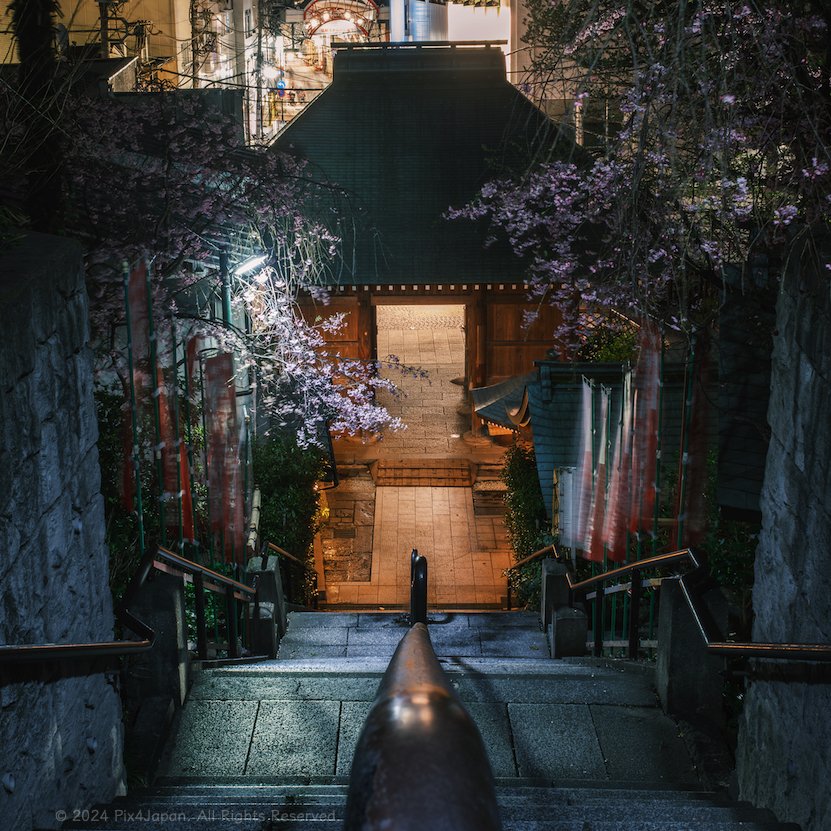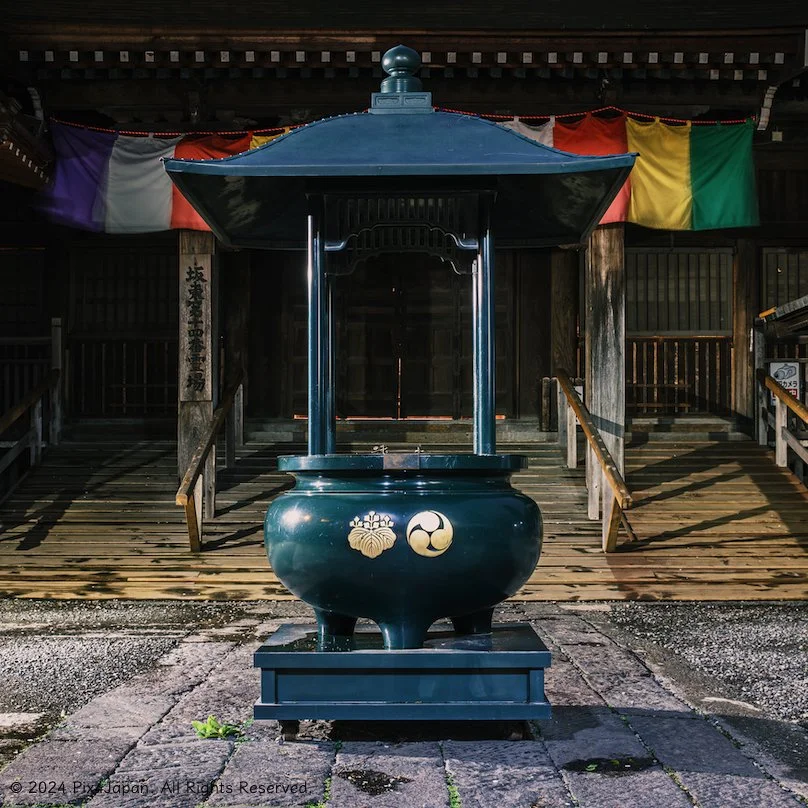
Temple Belfry
The bell and belfry at Gumyoji Temple in Yokohama, Japan, is a Yokohama City Tangible Cultural Property. The belfry features traditional Japanese architecture. The bronze bell was cast in 1798. The bell is rung 108 times for the Japanese Buddhist ceremony Joya-no-Kane, which involves ringing the temple bell 108 times to cleanse oneself of the earthly desires accumulated over the year.

Sakura & Nobori
A long exposure evening shot of the Niōmon Gate at Gumyoji Temple in Yokohama. The photo captures the stone staircase leading down to the illuminated wooden gate, framed by blooming cherry blossoms. Red nobori flags, blurred in motion, line the stairs, creating a sense of gentle movement against the calm, historic backdrop.

Jokoro Incense Burner
Front view of a large, cauldron-shaped incense burner at the top of the stairs in front of Gumyoji Temple. The burner is dark green with a decorative roof and is adorned with two distinct crests: the gosan-no-kiri, featuring the paulownia plant, and the hidari-mitsudomoe, a triple swirl motif. The background shows the wooden temple entrance, flanked by stairs and draped with colorful banners.

Gumyoji Temple
Founded in 1044, Gumyoji Temple in Yokohama, Japan, remains a vibrant cultural center for the local community.

Jizo Bodhisattva
Just beyond the Niōmon Gate at Gumyoji Temple, I encountered a serene courtyard adorned with small stone statues of the Jizo Bodhisattva. Revered in Buddhism, Jizo is a beloved figure, often depicted as a gentle monk with a staff and a wish-fulfilling jewel.

Niōmon Gate
The Niōmon Gate (仁王門), originally built during the Edo period (1603-1868), stands as a reminder of the rich architectural heritage that is abundant throughout Japan.